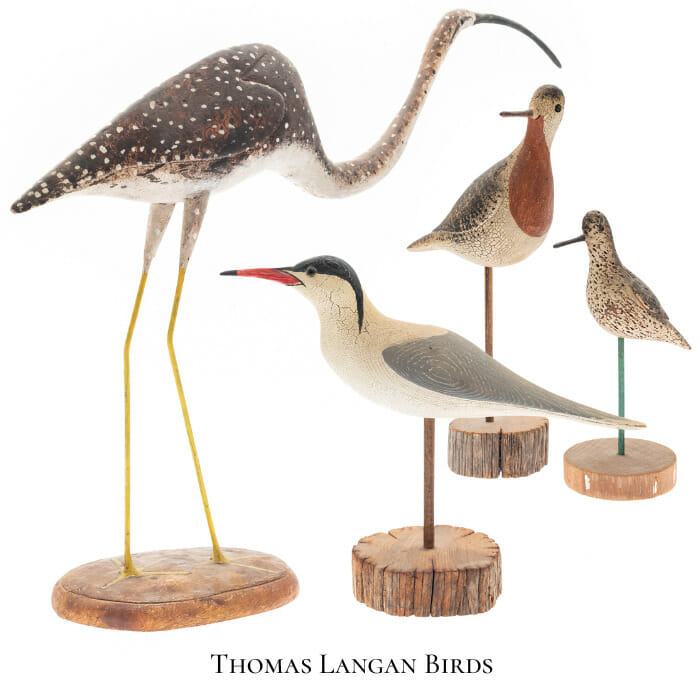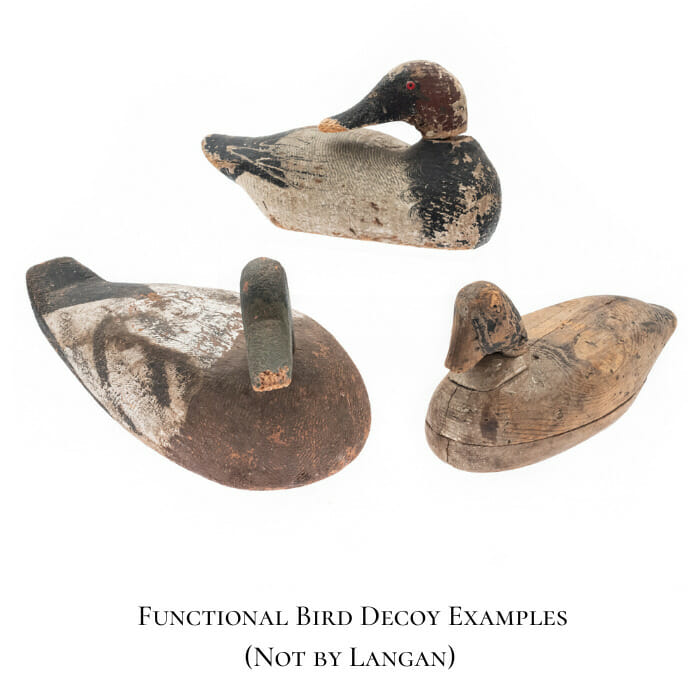Humans have employed bird decoys since ancient times. Early cultures used an array of methods to attract birds for hunting and capture. Interestingly, it is believed that the art of fabricating realistic bird decoys developed in North America in the 18th and 19th centuries.
The Native Americans created simple decoys from feathers and reeds to lure in potential prey. They were fully functional creations yet not quite decorative objects. In the early 19th century North America saw the emergence of Folk Art Decoys. These both decorative and functional birds became prevalent primarily in Chesapeake Bay and Great Lakes areas where artists sought out realistic accuracy to improve their hunting success.
The utility of functional bird decoys diminished over time due to ever changing hunting methods and regulations. This did not deter collectors from seeing the value and beauty in these artistic renderings of birds. A market for hunting aides transitioned into a market for folk art. Bird decoys became recognized as an authentic American folk art by the 20th century. Decoys carry the folk flavors of the artists and regions from which they came, adding cultural weight to art form.
Thomas Langan (1929 - 2017) was an Accomplished American Artist who was famous for his decoys. He began his decoy carving in the 1940s for the explicit purpose of increasing his hunting success. With practice he improved and developed his skill at realism. No detail was too small to be worth capturing for Langan. His decoys are popular amongst collectors because of his eye for detail and skill at rendering.
Our Fine Auction on Sunday July 23rd will host a large collection of Thomas Langan's Bird Decoys. It begins at 11am.




